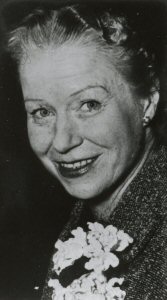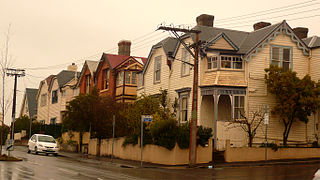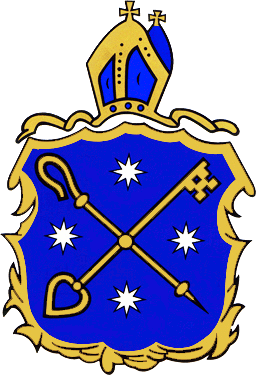
HobartHOH-bart; is the capital and most populous city of the island state of Tasmania, Australia. Located in Tasmania's south-east on the estuary of the River Derwent, it is the southernmost capital city in Australia. Despite containing nearly half of Tasmania's population, Hobart is the least-populated Australian state capital city, and second-smallest by population and area after Darwin if territories are taken into account. Its skyline is dominated by the 1,271-metre (4,170 ft) kunanyi / Mount Wellington, and its harbour forms the second-deepest natural port in the world, with much of the city's waterfront consisting of reclaimed land. The metropolitan area is often referred to as Greater Hobart, to differentiate it from the City of Hobart, one of the seven local government areas that cover the city. It has a mild maritime climate.

Mary is Queen of Denmark as the wife of King Frederik X.
The history of Tasmania begins at the end of the Last Glacial Period when it is believed that the island was joined to the Australian mainland. Little is known of the human history of the island until the British colonisation of Tasmania in the 19th century.

Sullivans Cove is on the River Derwent adjacent to the Hobart City Centre in Tasmania. It was the site of initial European settlement in the area, and the location of the earlier components of the Port of Hobart.

Dame Mabel Flora Miller, DBE was an Australian lawyer and politician. She was the first woman elected to the Hobart City Council and one of the first two women to be elected to the Tasmanian House of Assembly.

The Royal Hobart Hospital is a public hospital in the Hobart CBD, Tasmania, Australia. The hospital also functions as a teaching hospital in co-operation with the University of Tasmania. The hospital's research facilities are known as the Royal Hobart Hospital Research Foundation. Also close to the hospital site is the Menzies Research Institute.

Battery PointBAT-ə-ree-POINT is a suburb of the city of Hobart, Tasmania, Australia. It is immediately south of the central business district. It is in the local government area of City of Hobart.

Mary Shirley Walters was an Australian politician who served as a Senator for Tasmania from 1975 to 1993, representing the Liberal Party. She was the first woman to represent Tasmania in the Senate, and was known for her social conservatism.

Sir James Willson Agnew was an Irish-born Australian politician, who was Premier of Tasmania from 1886 to 1887.
Derwent Barracks is an Australian Army barracks in the Hobart suburb of Glenorchy, near the Elwick Racecourse and Hobart Showgrounds. It is named after the nearby Derwent River. It is the home of several Army Reserve units including:

The Anglican Diocese of Tasmania includes the entire Tasmanian state of Australia and is an extraprovincial diocese of the Anglican Church of Australia.

The Royal Hobart Regatta is a series of aquatic competitions and displays held annually in Hobart, Tasmania, Australia and is Tasmania's oldest sporting event. The regatta began in 1838.

The Hobart Zoo was an old-fashioned zoological garden located on the Queen's Domain in Hobart, Tasmania, Australia. The Zoo site is very close to the site of the Tasmanian Governor's House, and the Botanical Gardens. Although its location became primarily the site of a Hobart City Council depot, some remnants and archaeological remains of the original Zoo can still be seen.
The Calvary Hospital is a Catholic not-for-profit private hospital located in Lenah Valley, Hobart, Tasmania. It operates as part of Little Company of Mary Health Care, a nationwide Catholic health provider. The hospital specialises in surgery, critical care, oncology, and a broad range of other medical services, and is one of Tasmania's most prominent private healthcare institutions.

Vera Scantlebury Brown OBE MBBS MD was an Australian medical practitioner and pediatrician in Victoria, Australia.

The Hobart coastal defences are a network of now defunct coastal batteries, some of which are inter-linked with tunnels, that were designed and built by British colonial authorities in the nineteenth century to protect the city of Hobart, Tasmania, from attack by enemy warships. During the nineteenth century, the port of Hobart Town was a vital re-supply stop for international shipping and trade, and therefore a major freight hub for the British Empire. As such, it was considered vital that the colony be protected. In all, between 1804 and 1942 there were 12 permanent defensive positions constructed in the Hobart region.
Sir Eardley Max Bingham, was an Australian politician. He was Deputy Premier and Opposition Leader of Tasmania, who represented the electorate of Denison for the Liberal Party in the Tasmanian House of Assembly from 1969 to 1984.
John Bruce Hamilton was an Australian ophthalmologist.
Lorna Doone Pleasance Kennedy was an Australian politician and civic leader who served as the Lord Mayor of Hobart, the capital of Tasmania, from 1986 until 1996. Kennedy was the first woman to be elected Lord Mayor of Hobart and remained the city's only female mayor until the election of Sue Hickey in 2014.
The College of Health and Medicine is a college of the University of Tasmania that incorporates the School of Medicine, School of Health Sciences, Wicking Centre and Menzies Institute for Medical Research. The College incorporates medicine, pharmacy, psychology, paramedicine, nursing, laboratory medicine, allied health sciences and rural health into its curricula and research.













